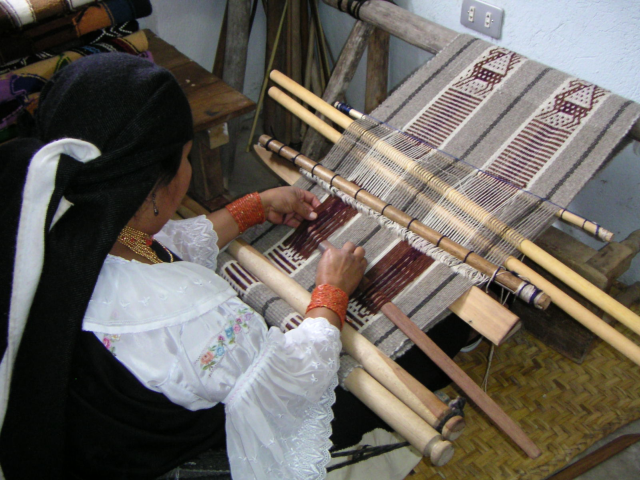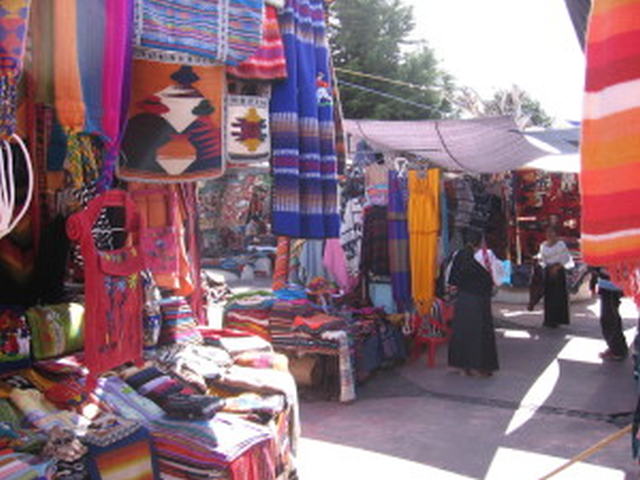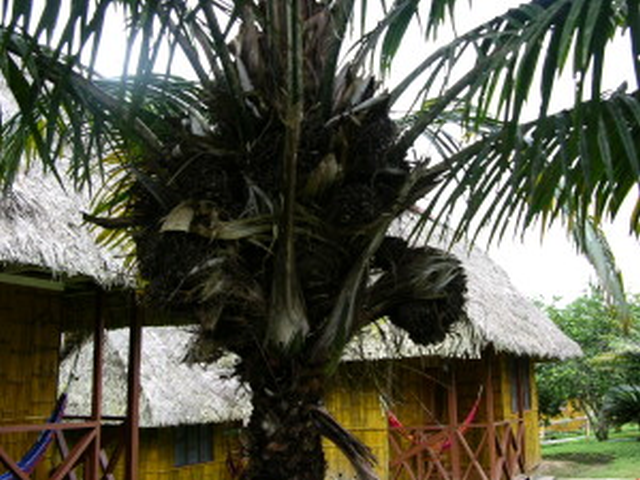The next day in Ecuador went well. I caught a bus to Cotacachi, some 2 hours north of Quito. Cotacachi is a beautiful, artisan city that is famous for its leather goods and handicrafts. Cotacachi residents are also well known for their “carne colorada” (filet of pork cooked in red achiote sauce), and queso de hoja (soft cheese wrapped in a plant leaf). The city of Cotacachi holds a UNESCO medal for being free of illiteracy. In 2000, the entire canton was declared the first ecological county in South America. The city is located 5 miles northwest of the artisan city of Otavalo and about 3 miles west of the “Panamerican Highway” (Route 35). It lies in the valley between the volcanos of Imbabura and Cotacachi. There are two main entrances to the city, both exiting off the Panamerican Highway. The first entrance feeds directly into the city’s main square, while the other turns into the famed “Calle 10 de Agosto” (locally known as Leather Street).
Enjoy a bit of Cotacachi here:
Indigenous Ecuadorians I found the indigenous people of Ecuador to be a very interesting people. In this regard, I spent quite a bit of time (learning) to converse with them. They are the people who were present in what became the South American nation of Ecuador when Europeans arrived. Tso includes their descendants from the time of the Spanish Conquest to the present. Their history, which encompasses several thousand years, reaches into the present. Twenty-five percent of Ecuador’s population is of indigenous heritage, while another 65 percent is of mixed indigenous and European heritage. Black people of Spanish descent and others make up the remaining 10 percent.
Artisans At Work I spent a week in and around Cotacachi, visiting all the nearby villages, shops and watching the artisans work their magic. Cotacachi is well known for making beautiful and excellent quality leather goods by hand. You want a custom pair of boots? No problem. You want a custom leather jacket? No problem. I saw tons of goods with American brands on them, such as Harley Davidson Boots, belts, jackets, pants, etc. I wondered if any of these shops were actually licensed by Harley or the other brands on display. Oh well, not for me to question.

Indigenous Woman Working Loom
Every village in the area has its own special niche or specialty. Cotacachi is known for its leather, San Antonio de Ibarra specializes in woodcrafts. At one point I sat and watched this extremely talented wood carver take a wood chisel and a small hammer and chisel a beautiful and very detailed sculpture of Christ from a large piece of tree trunk. Another village specializes in jewelry, another specializes in beautifully colored textiles for all ages and sizes.

Wood Carving
The Otavalo Market Otavalo is home to the largest open air market in South America. Although the largest market is on Saturday, there is a very wide range of wares available throughout the week in the Plaza de los Ponchos, and the many local shops. The shops sell textiles such as handmade blankets, tablecloths, and much more. During the market’s peak, almost one third of the town becomes full of stalls selling textiles, tagua nut jewelry, musical instruments, dream catchers, leather goods, fake shrunken heads, indigenous costumes, hand-painted platters and trays, purses, clothing, spices, raw foods and spools of wool.
At one time, Otavalo was made up principally of farming due to the rich volcanic soils in this area, but with the growth of tourism, the town has begun to focus more on the making of handicrafts which have made the Saturday market a popular stop with visitors to Ecuador. Tourism has become the town’s main industry and as a result, there are many more hotels, hostels and tour operators than other similarly sized Ecuadorian towns, such as nearby Cavambe.

Otavalo Market
The Alpaca is part of the South American Llama and Vicuna family and is essential for the Andean economy as it provides meat for direct consumption as well as fiber, leather and fur. Alpaca fur is among the softest of all animal fibers. They produce one of the world’s finest and most luxurious natural fibers.

Alpaca Rug
Another item indigenous to the nearby rain forests is “Tagua Nut.” Since the banning of ivory, this nut has become quite popular…again. It is known around the world as “vegetable ivory.” Once the nut has been made into crafts, it gives a very close appearance to ivory. It is a very desirable substitute for elephant ivory.

Tagua Palm
The Tagua palm grows up to 8 meters in length, usually in the swampy parts of the forest and often in groups. The palm produces yearly with up to fifteen spikes of its fruits. The spike has a hard shell with protrusions and has in its interior about thirty nuts. It is this nut that has made the Tagua palm valuable and famous. The fruits or nuts are 5 to 6 cm in size with the largest ones up to 10 cm, and have a brown skin and its pulp is white cellulose and edible. The wonder comes when the nuts are left to dry. After a few weeks in the sun the interior turns to ivory; palm ivory. From this palm ivory, skillful artisans make beautiful handicrafts. In olden times Tagua was much more known and used than today. Before the invention of plastics, Tagua was, for over two hundred years, an important raw material for luxury articles, and was being processed on three continents around the globe; for netsukes (Japanese miniatures), dice, dominos and chessmen. Furthermore knobs of canes, umbrellas, needle boxes, religious figures and toys and most of all for buttons. With the advent of plastics, Tagua was put aside. However, over the last few decades, Tagua has become valuable again as a natural material because of its beauty and because the use of the Tagua protects the rain forests. Another good thing about Tagua is that its harvest leaves the rain forest untouched.

Tagua Jewelry
Are you now somewhat excited about doing some traveling? It doesn’t matter if it’s across the world or across the state, let me encourage you to live your dream. Grab your camera and get out and enjoy what you have been putting off.
If it’s a matter of cost, Click Here. This could help!
On the road with Bill








